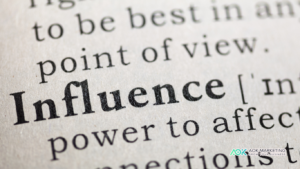To continue thriving in digital marketing, businesses must adapt. One effective strategy is hiring micro-influencers, who have emerged as a powerful force for brands looking to connect with engaged, niche audiences. With follower counts ranging between 10,000 and 100,000, micro-influencers may not have the reach of mega- or macro-influencers, but they offer something arguably more valuable: authenticity and trust. Their audiences are often more engaged, and their influence stems from their deep knowledge of a specific niche. As a result, micro-influencers can be highly effective in driving meaningful engagement and delivering a higher return on investment (ROI) for brands.
In this article, we’ll explore the advantages and challenges of working with micro-influencers and how brands can leverage them to achieve marketing success.

What Are Micro-Influencers?
Micro-influencers are individuals who have built a substantial but relatively smaller following compared to mega- or macro-influencers. These influencers tend to focus on specific niches—whether it’s beauty, fitness, fashion, tech, or sustainable living—and their followers view them as trustworthy experts in these fields. Because of their smaller but engaged audiences, micro-influencers are seen as more relatable and authentic compared to their larger counterparts.
For brands, influencers with less followers offer a way to connect with highly targeted communities. Whether you’re looking to reach eco-conscious consumers or tech-savvy professionals, these type of influencers can help you deliver your message to the right people.
The Advantages of Working with Micro-Influencers
1. High Engagement Rates
One of the most significant advantages of micro-influencers is their high engagement rates. While their audience size is smaller than that of mega- or macro-influencers, micro-influencers tend to have a more personal connection with their followers. This relatability and trust often translate into higher engagement levels, including likes, comments, and shares.
Followers of smaller influencers view them as authentic and approachable, making them more likely to act on recommendations. For example, a beauty brand partnering with a micro-influencer in the skincare niche can expect higher interactions from followers who trust the influencer’s advice on product use and efficacy. This deep engagement often leads to better campaign results, with brands seeing a higher return on investment (ROI).
2. Cost-Effective Marketing
Micro-influencers offer a cost-effective solution for brands with smaller marketing budgets. While mega-influencers and celebrities can charge hefty fees for a single post, smaller influencers typically charge much less. This affordability allows brands to stretch their marketing dollars further, making it easier to collaborate with multiple influencers without breaking the bank.
For example, a small fitness brand could partner with several micro-influencers across different niches, such as yoga, strength training, and wellness, to reach various segments of the fitness community. This approach not only expands the brand’s reach but also allows for more targeted messaging that resonates with each influencer’s audience.
3. Targeted Audiences
One of the key strengths of micro-influencers is their ability to cater to highly specific niches. Whether it’s vegan food, tech gadgets, or sustainable fashion, micro-influencers often build their following based on a specific passion or interest. This makes them an ideal fit for brands looking to reach a niche audience that aligns closely with their products or services.
For instance, a brand specializing in eco-friendly products could collaborate with micro-influencers who advocate for sustainability and ethical consumption. The influencer’s followers, who are likely to share similar values, will be more receptive to the brand’s message, leading to higher conversion rates and brand loyalty.
4. Authenticity and Trust
In a digital landscape where consumers are increasingly skeptical of overt advertising, authenticity is key. Micro-influencers are known for their genuine connection with their followers, and their recommendations often feel more like advice from a trusted friend than a paid promotion. This level of trust makes their audience more likely to act on their suggestions, leading to higher conversions and long-term brand relationships.
Brands that collaborate with micro-influencers benefit from this authenticity, as it helps foster a deeper emotional connection with consumers. For example, a travel brand could partner with a micro-influencer who shares their personal travel experiences and tips. The influencer’s audience is more likely to trust their travel recommendations because they perceive the influencer as someone with real-world knowledge and experience.
The Challenges of Working with Micro-Influencers
1. Limited Reach
The main challenge of working with micro-influencers is their limited reach. While their engagement rates are high, their smaller follower count may not provide the mass exposure that some brands seek. If your primary goal is to generate widespread awareness quickly, micro-influencers may not be the best option.
However, if your goal is to reach a specific, engaged audience, micro-influencers can be incredibly effective. For brands looking to balance reach and engagement, combining micro-influencers with macro- or mega-influencers in a comprehensive influencer marketing strategy can provide the best of both worlds.
2. Managing Multiple Influencers
To achieve broader reach, brands often need to work with several influencers simultaneously. While this can lead to more targeted messaging, it also presents logistical challenges. Managing multiple influencers requires more coordination, time, and resources. Each influencer may have different preferences, schedules, and audience dynamics, making it more complex to maintain consistent messaging across the board.
To overcome this challenge, brands should consider partnering with influencer agencies or using influencer management platforms that can streamline the process. These tools can help brands track influencer performance, manage communication, and ensure that all partnerships run smoothly.
Best Practices for Collaborating with Micro-Influencers
Choose Influencers Aligned with Your Brand Values: The key to a successful collaboration is finding influencers whose content and values align with your brand. Look for influencers who are genuinely interested in your industry or products, as this will make the partnership feel more authentic.
Focus on Engagement, Not Just Follower Count: Don’t be swayed solely by an influencer’s follower count. High engagement rates are often more valuable than large but passive audiences. Look for influencers who have a strong connection with their followers, as this will lead to more meaningful interactions with your brand.
Give Creative Freedom: Influencers know their audience best, so allow them to have creative freedom when it comes to promoting your products. Authentic content that feels organic will resonate more with their followers than overly scripted posts.
Measure Performance: Like any marketing campaign, it’s important to measure the success of your micro-influencer partnerships. Track key metrics such as engagement rates, click-through rates, and conversions to determine the effectiveness of your collaborations.
Conclusion: Micro-Influencers for Authentic and Targeted Marketing
Micro-influencers offer a unique combination of high engagement, niche appeal, and cost-effectiveness, making them an ideal choice for brands looking to connect with specific communities. While their reach may be smaller compared to mega- and macro-influencers, their authenticity and ability to drive meaningful engagement make them a powerful tool in any influencer marketing strategy.
By carefully selecting creators aligned with your brand, focusing on engagement rather than sheer follower numbers, and managing partnerships effectively, brands can achieve impressive results and build lasting connections with their target audiences.
About The Author
Marketing Team
The AOK Marketing Team is a diverse group of amazing individuals driven to help all of our clients succeed. Great people are everywhere, and we believe that people should control their workday, their work environment, and where they live. We have team members in 9 countries: United States, Canada, Egypt, Belgium, Ireland, Australia, India, Pakistan, and Hong Kong.
How can we help you?





